LA66 LoRaWAN Module
Table of Contents:
- 1. LA66 LoRaWAN Module
- 2. LA66 LoRaWAN Shield
- 2.1 Overview
- 2.2 Features
- 2.3 Specification
- 2.4 LED
- 2.5 Example: Use AT Command to communicate with LA66 module via Arduino UNO.
- 2.6 Example: Join TTN network and send an uplink message, get downlink message.
- 2.7 Example: Log Temperature Sensor(DHT11) and send data to TTN, show it in Node-RED.
- 2.8 Upgrade Firmware of LA66 LoRaWAN Shield
- 3. LA66 USB LoRaWAN Adapter
- 3.1 Overview
- 3.2 Features
- 3.3 Specification
- 3.4 Pin Mapping & LED
- 3.5 Example: Send & Get Messages via LoRaWAN in PC
- 3.6 Example: Send PC's CPU/RAM usage to TTN via python
- 3.7 Example: Send & Get Messages via LoRaWAN in RPi
- 3.8 Example: Use of LA66 USB LoRaWAN Adapter and mobile APP
- 3.9 Upgrade Firmware of LA66 USB LoRaWAN Adapter
- 4. FAQ
- 5. Order Info
- 6. Reference
1. LA66 LoRaWAN Module
1.1 What is LA66 LoRaWAN Module
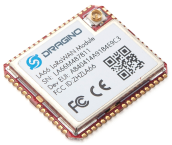
Dragino LA66 is a small wireless LoRaWAN module that offers a very compelling mix of long-range, low power consumption, and secure data transmission. It is designed to facilitate developers to quickly deploy industrial-level LoRaWAN and IoT solutions. It helps users to turn the idea into a practical application and make the Internet of Things a reality. It is easy to create and connect your things everywhere.
LA66 is a ready-to-use module that includes the LoRaWAN v1.0.3 protocol. The LoRaWAN stack used in LA66 is used in more than 1 million LoRaWAN End Devices deployed world widely. This mature LoRaWAN stack greatly reduces the risk to make stable LoRaWAN Sensors to support different LoRaWAN servers and different countries' standards. External MCU can use AT command to call LA66 and start to transmit data via the LoRaWAN protocol.
Each LA66 module includes a world-unique OTAA key for LoRaWAN registration.
Besides the support of the LoRaWAN protocol, LA66 also supports open-source peer-to-peer LoRa Protocol for the none-LoRaWAN application.
LA66 is equipped with TCXO crystal which ensures the module can achieve stable performance in extreme temperatures.
1.2 Features
- Support LoRaWAN v1.0.4 protocol
- Support peer-to-peer protocol
- TCXO crystal to ensure RF performance on low temperature
- SMD Antenna pad and i-pex antenna connector
- Available in different frequency LoRaWAN frequency bands.
- World-wide unique OTAA keys.
- AT Command via UART-TTL interface
- Firmware upgradable via UART interface
- Ultra-long RF range
1.3 Specification
- CPU: 32-bit 48 MHz
- Flash: 256KB
- RAM: 64KB
- Input Power Range: 1.8v ~ 3.7v
- Power Consumption: < 4uA.
- Frequency Range: 150 MHz ~ 960 MHz
- Maximum Power +22 dBm constant RF output
- High sensitivity: -148 dBm
- Temperature:
- Storage: -55 ~ +125℃
- Operating: -40 ~ +85℃
- Humidity:
- Storage: 5 ~ 95% (Non-Condensing)
- Operating: 10 ~ 95% (Non-Condensing)
- LoRa Tx Current: <90 mA at +17 dBm, 108 mA at +22 dBm
- LoRa Rx current: <9 mA
- I/O Voltage: 3.3v
1.4 AT Command
AT Command is valid over Main TXD and Main RXD. Serial Baud Rate is 9600. AT commands can be found in AT Command documents.
1.5 Dimension
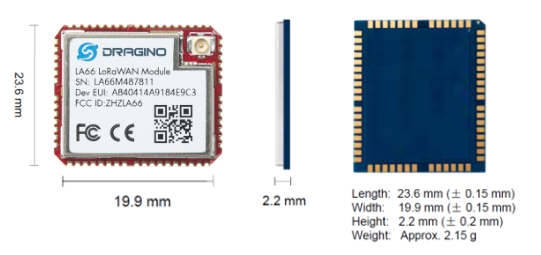
1.6 Pin Mapping
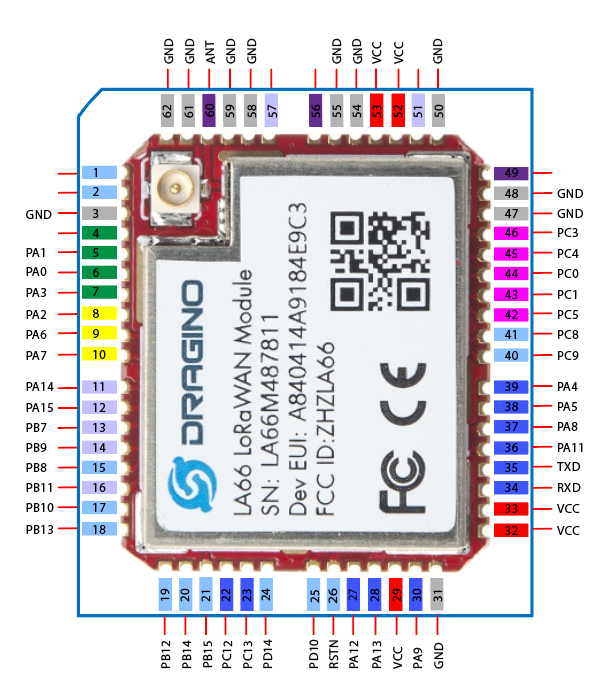
1.7 Land Pattern
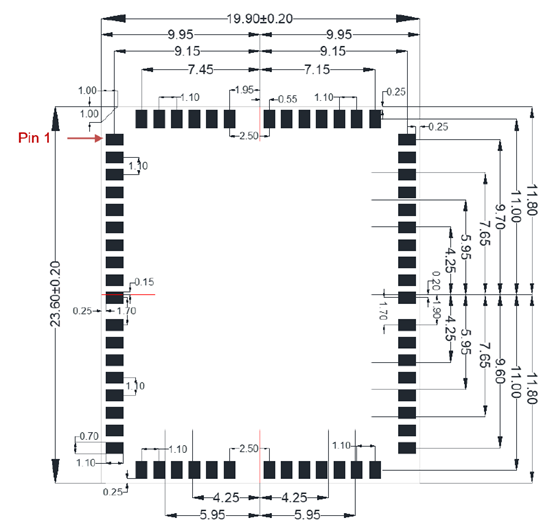
2. LA66 LoRaWAN Shield
2.1 Overview
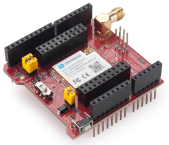
LA66 LoRaWAN Shield is the Arduino shield base on LA66. Users can use LA66 LoRaWAN Shield to rapidly add LoRaWAN or peer-to-peer LoRa wireless function to Arduino projects.
LA66 is a ready-to-use module that includes the LoRaWAN v1.0.3 protocol. The LoRaWAN stack used in LA66 is used in more than 1 million LoRaWAN End Devices deployed world widely. This mature LoRaWAN stack greatly reduces the risk to make stable LoRaWAN Sensors to support different LoRaWAN servers and different countries' standards. External MCU can use AT command to call LA66 and start to transmit data via the LoRaWAN protocol.
Each LA66 module includes a world-unique OTAA key for LoRaWAN registration.
Besides the support of the LoRaWAN protocol, LA66 also supports open-source peer-to-peer LoRa Protocol for the none-LoRaWAN application.
LA66 is equipped with TCXO crystal which ensures the module can achieve stable performance in extreme temperatures.
2.2 Features
- Arduino Shield base on LA66 LoRaWAN module
- Support LoRaWAN v1.0.4 protocol
- Support peer-to-peer protocol
- TCXO crystal to ensure RF performance on low temperature
- SMA connector
- Available in different frequency LoRaWAN frequency bands.
- World-wide unique OTAA keys.
- AT Command via UART-TTL interface
- Firmware upgradable via UART interface
- Ultra-long RF range
2.3 Specification
- CPU: 32-bit 48 MHz
- Flash: 256KB
- RAM: 64KB
- Input Power Range: 1.8v ~ 3.7v
- Power Consumption: < 4uA.
- Frequency Range: 150 MHz ~ 960 MHz
- Maximum Power +22 dBm constant RF output
- High sensitivity: -148 dBm
- Temperature:
- Storage: -55 ~ +125℃
- Operating: -40 ~ +85℃
- Humidity:
- Storage: 5 ~ 95% (Non-Condensing)
- Operating: 10 ~ 95% (Non-Condensing)
- LoRa Tx Current: <90 mA at +17 dBm, 108 mA at +22 dBm
- LoRa Rx current: <9 mA
- I/O Voltage: 3.3v
2.4 LED
1. The LED lights up red when there is an upstream data packet
2. When the network is successfully connected, the green light will be on for 5 seconds
3. Purple light on when receiving downlink data packets
2.5 Example: Use AT Command to communicate with LA66 module via Arduino UNO.
Show connection diagram:
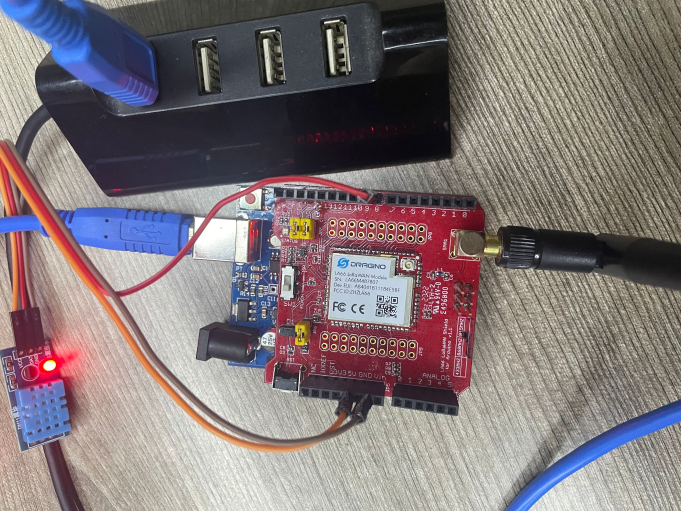
1. open Arduino IDE
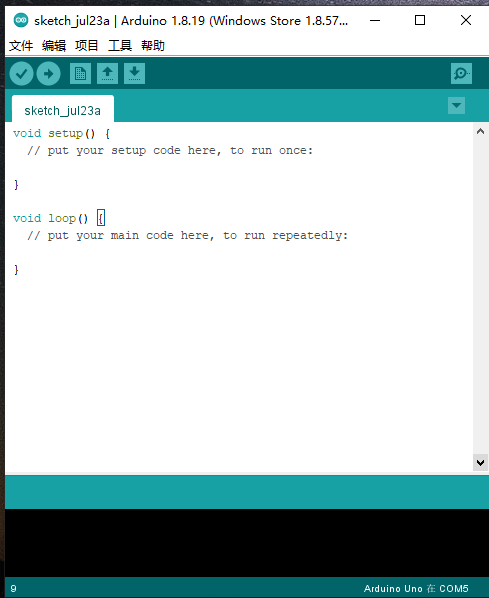
2. Open project
LA66-LoRaWAN-shield-AT-command-via-Arduino-UNO source code link: https://www.dropbox.com/sh/cx0pspkwu62pr97/AAAbKh2ioPdZfSDtdDpooYqha?dl=0
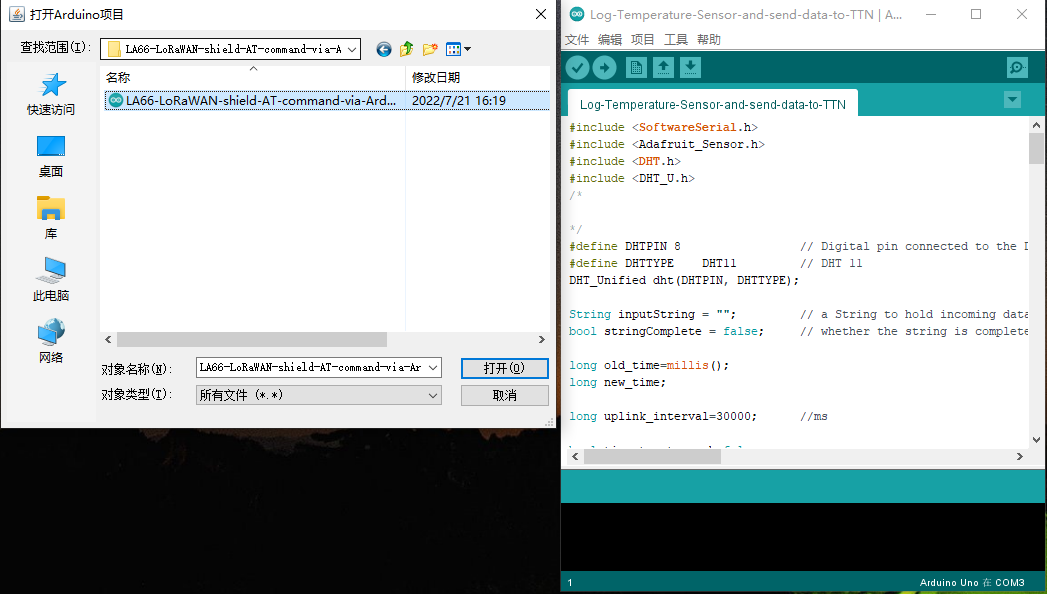
3. Click the button marked 1 in the figure to compile, and after the compilation is complete, click the button marked 2 in the figure to upload
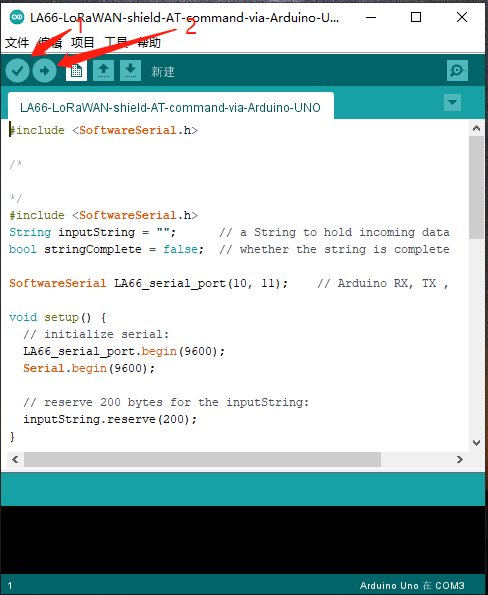
4. After the upload is successful, open the serial port monitoring and send the AT command
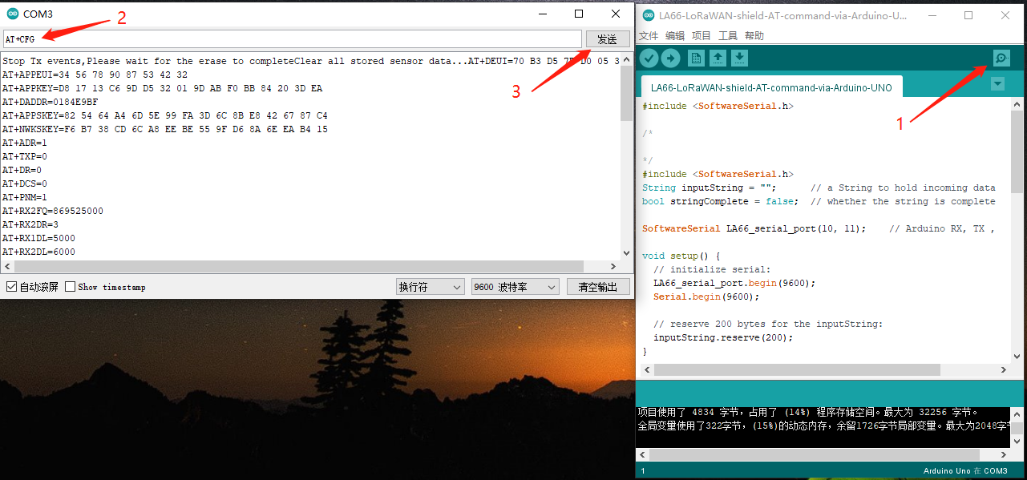
2.6 Example: Join TTN network and send an uplink message, get downlink message.
1. Open project
Join-TTN-network source code link: https://www.dropbox.com/sh/0sjyncafa0gjv00/AACC2m1orov-QHRkvH8-ddCka?dl=0
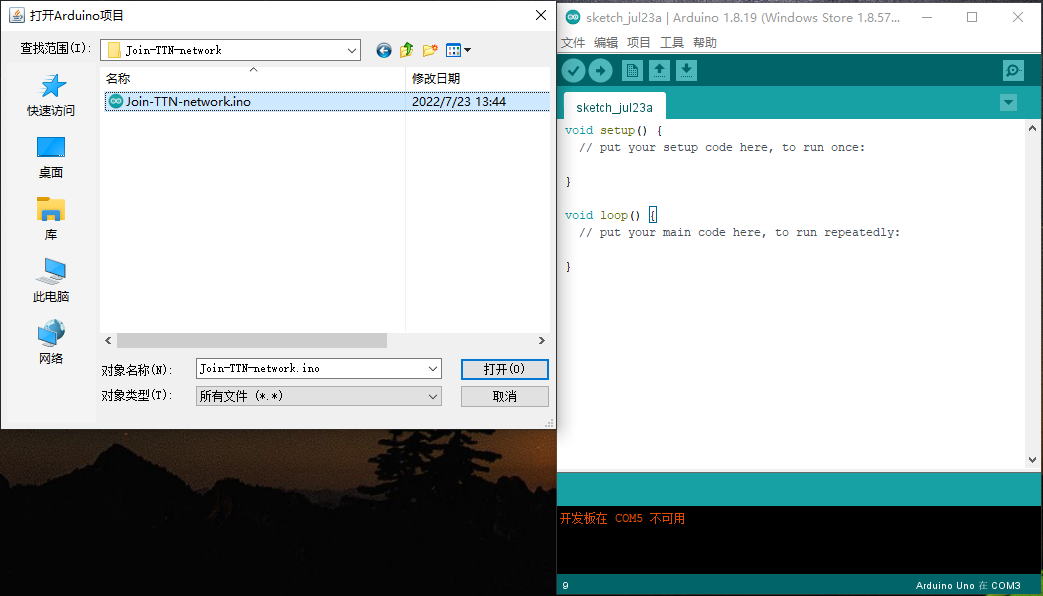
2. Same steps as 2.5,after opening the serial port monitoring, it will automatically connect to the network and send packets
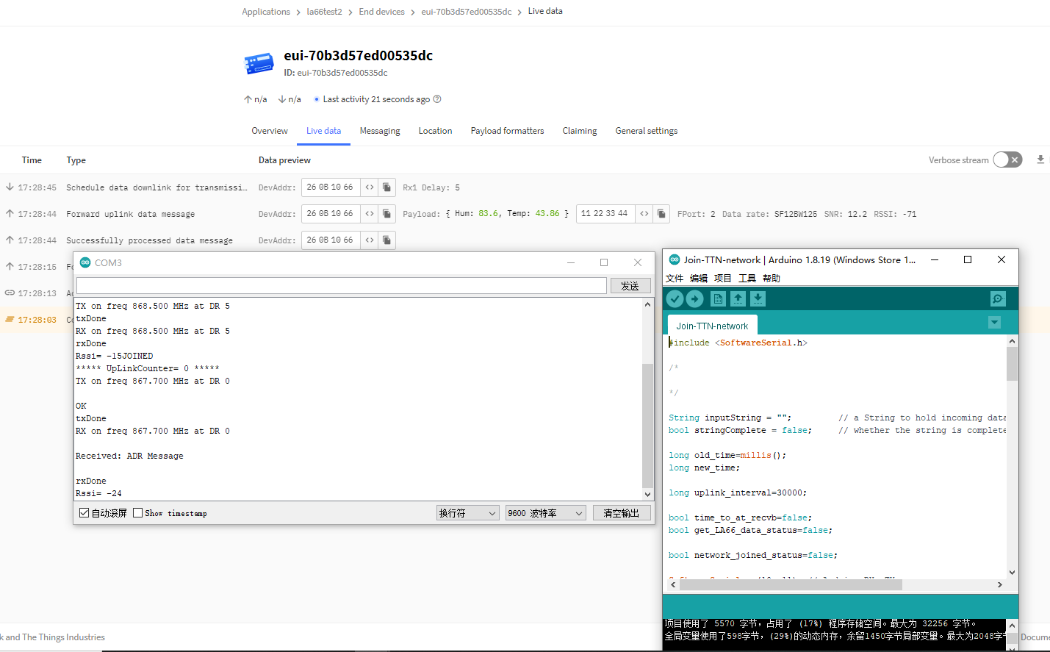
2.7 Example: Log Temperature Sensor(DHT11) and send data to TTN, show it in Node-RED.
1. Open project
Log-Temperature-Sensor-and-send-data-to-TTN source code link: https://www.dropbox.com/sh/0aagmrpec1lxmva/AABMXWVMSHG9dK1_Zv_7xOmCa?dl=0
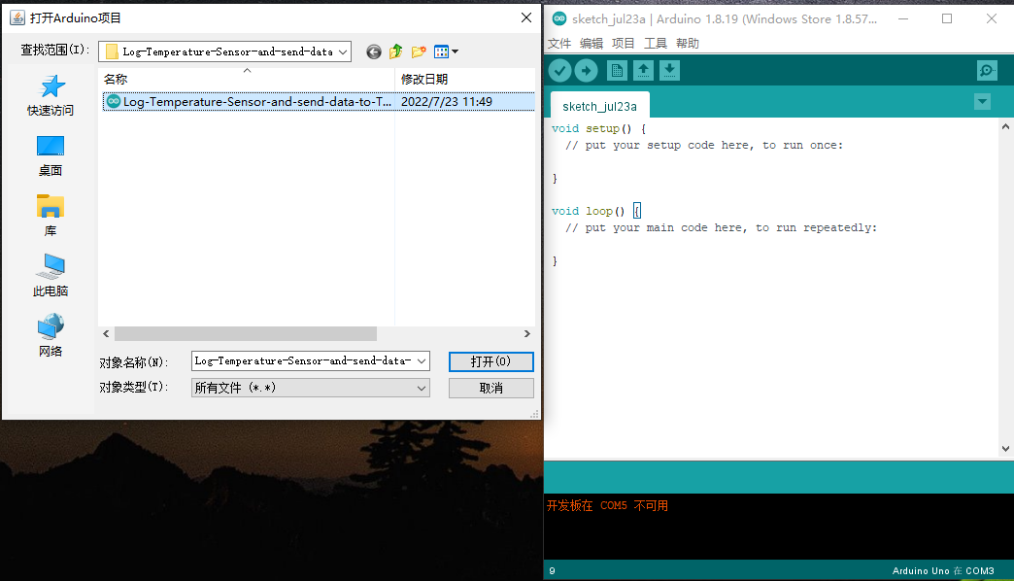
2. Same steps as 2.5,after opening the serial port monitoring, it will automatically connect to the network and send packets
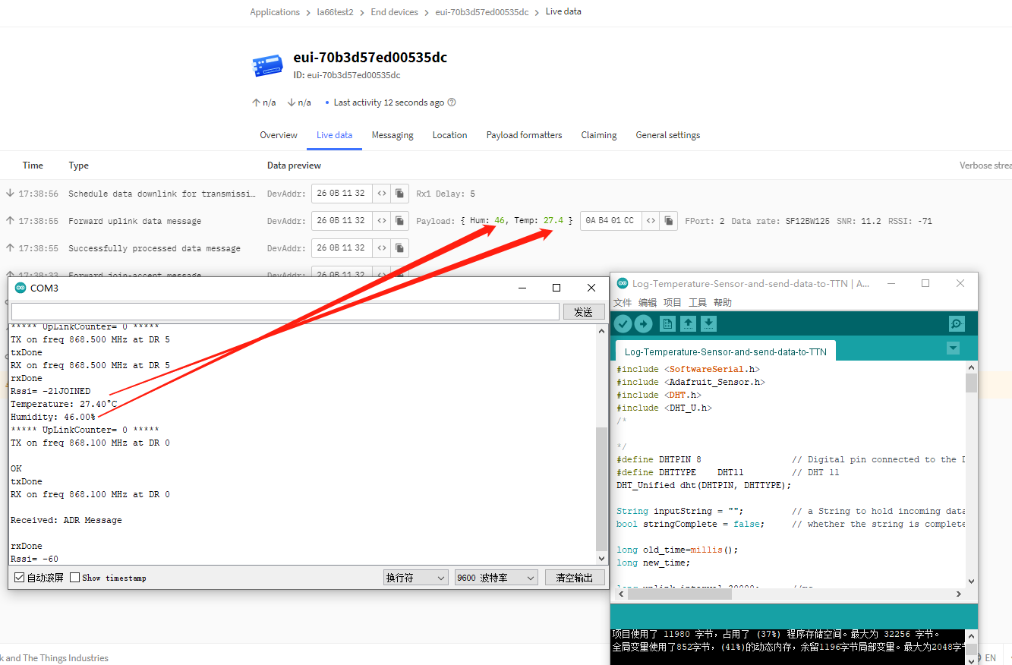
3. Integration into Node-red via TTNV3
For the usage of Node-RED, please refer to: http://8.211.40.43:8080/xwiki/bin/view/Main/Node-RED/
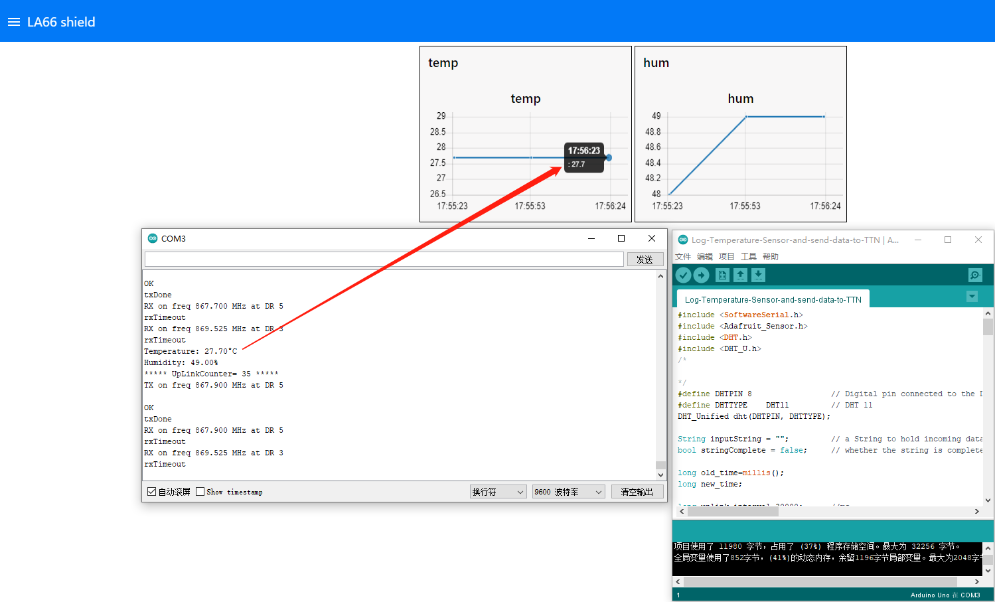
2.8 Upgrade Firmware of LA66 LoRaWAN Shield
2.8.1 Items needed for update
- LA66 LoRaWAN Shield
- Arduino
- USB TO TTL Adapter
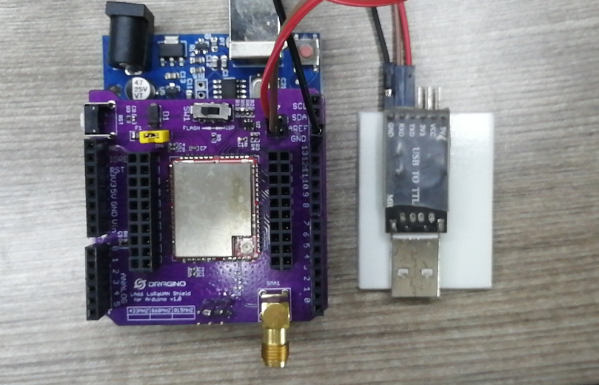
2.8.2 Connection
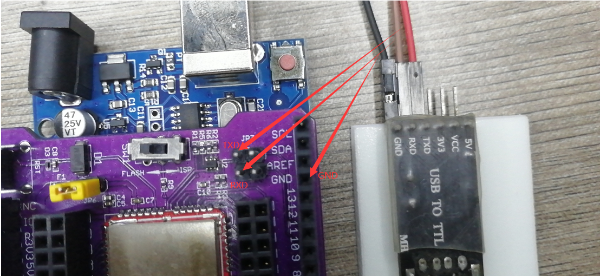
LA66 LoRaWAN Shield <-> USB TTL
GND <-> GND
TXD <-> TXD
RXD <-> RXD
Put a jumper cap on JP6 of LA66 LoRaWAN Shield. ( the jumper is to power on LA66 module)
Connect USB TTL Adapter to PC after connecting the wires
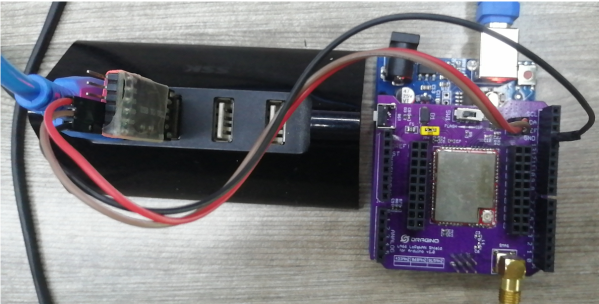
2.8.3 Upgrade steps
1. Switch SW1 to put in ISP position
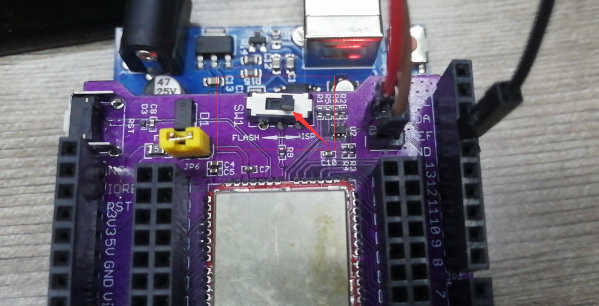
2. Press the RST switch once
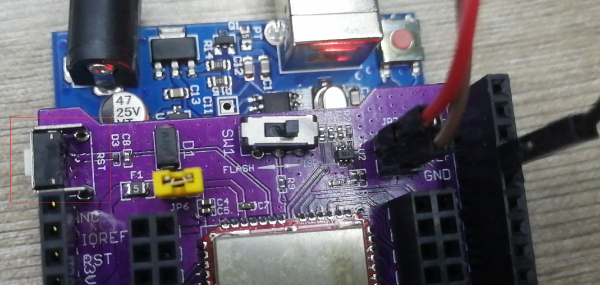
3. Open the Upgrade tool (Tremo Programmer) in PC and Upgrade
1. Software download link: https://www.dragino.com/downloads/index.php?dir=LSN50-LoRaST/Utility/LSN50N/
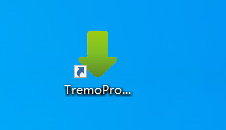
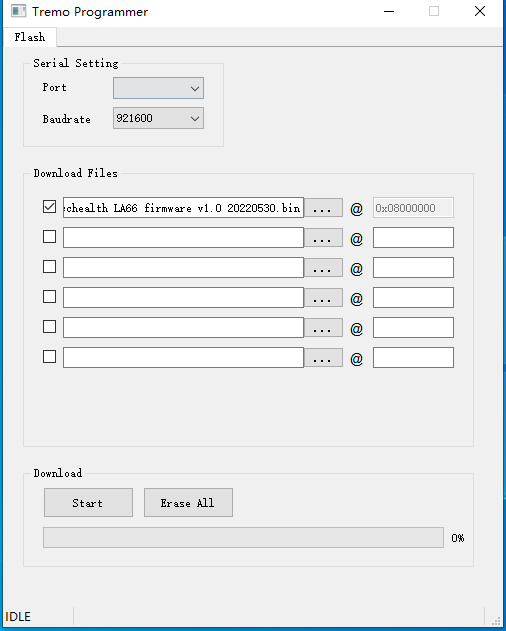
2. Select the COM port corresponding to USB TTL
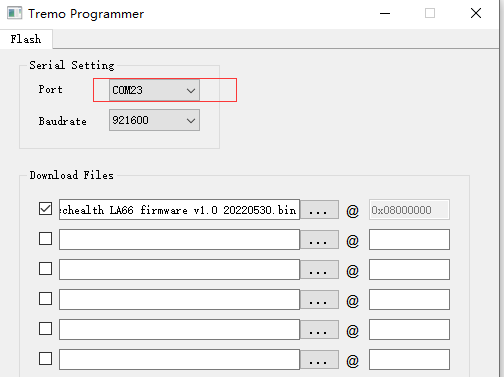
3. Select the bin file to burn
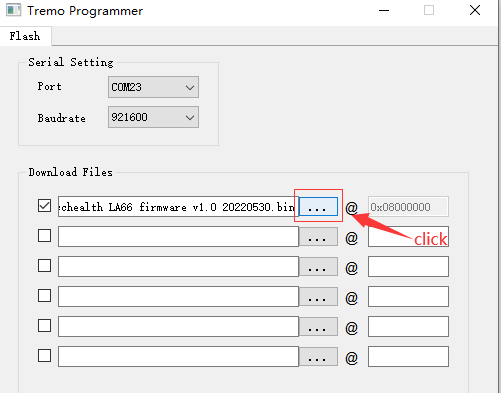
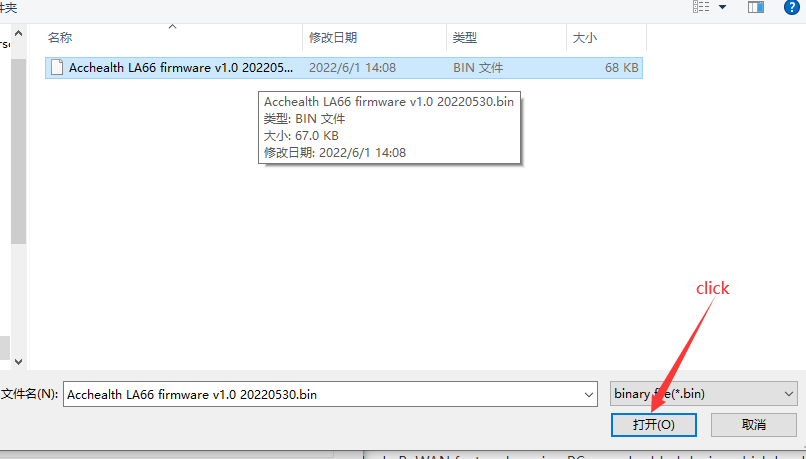
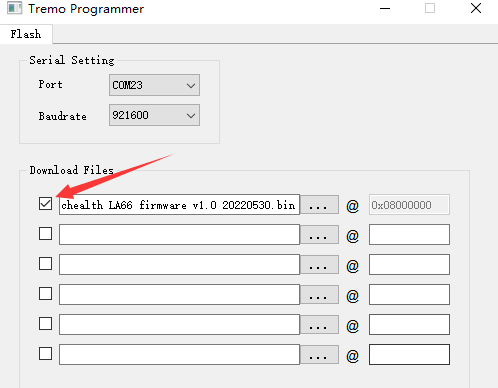
4. Click to start the download
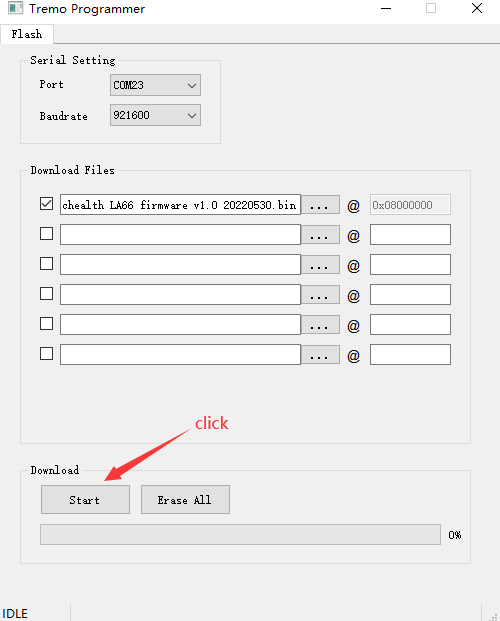
5. Check update process
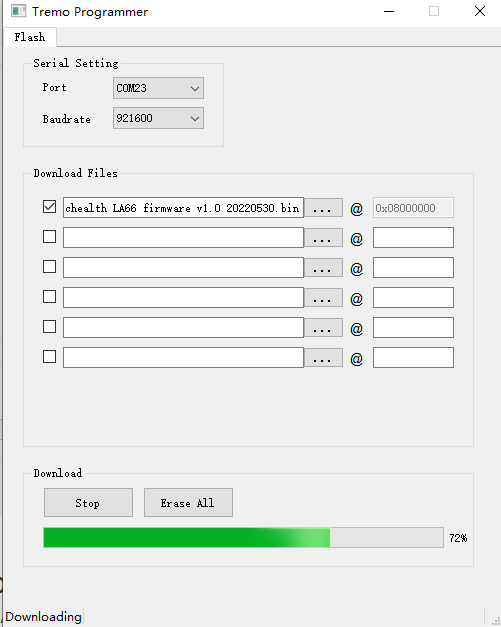
The following picture shows that the burning is successful
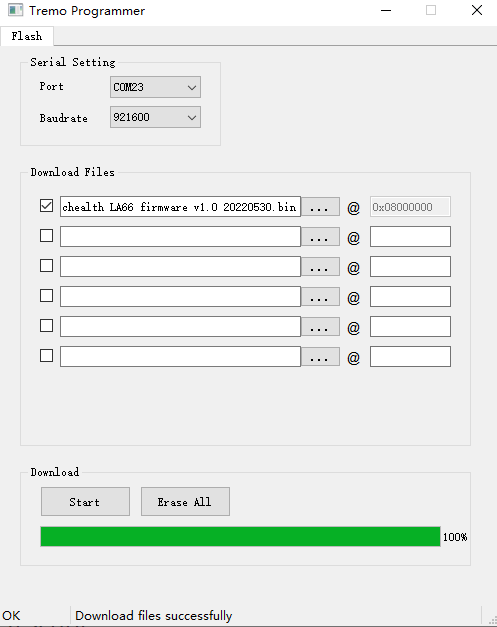
3. LA66 USB LoRaWAN Adapter
3.1 Overview
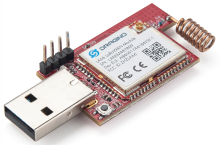
LA66 USB LoRaWAN Adapter is designed to fast turn USB devices to support LoRaWAN wireless features. It combines a CP2101 USB TTL Chip and LA66 LoRaWAN module which can easy to add LoRaWAN wireless feature to PC / Mobile phone or an embedded device that has USB Interface.
LA66 is a ready-to-use module that includes the LoRaWAN v1.0.3 protocol. The LoRaWAN stack used in LA66 is used in more than 1 million LoRaWAN End Devices deployed world widely. This mature LoRaWAN stack greatly reduces the risk to make stable LoRaWAN Sensors to support different LoRaWAN servers and different countries' standards. External MCU can use AT command to call LA66 and start to transmit data via the LoRaWAN protocol.
Each LA66 module includes a world-unique OTAA key for LoRaWAN registration.
Besides the support of the LoRaWAN protocol, LA66 also supports open-source peer-to-peer LoRa Protocol for the none-LoRaWAN application.
LA66 is equipped with TCXO crystal which ensures the module can achieve stable performance in extreme temperatures.
3.2 Features
- LoRaWAN USB adapter base on LA66 LoRaWAN module
- Ultra-long RF range
- Support LoRaWAN v1.0.4 protocol
- Support peer-to-peer protocol
- TCXO crystal to ensure RF performance on low temperature
- Spring RF antenna
- Available in different frequency LoRaWAN frequency bands.
- World-wide unique OTAA keys.
- AT Command via UART-TTL interface
- Firmware upgradable via UART interface
- Open Source Mobile App for LoRaWAN signal detect and GPS tracking.
3.3 Specification
- CPU: 32-bit 48 MHz
- Flash: 256KB
- RAM: 64KB
- Input Power Range: 5v
- Frequency Range: 150 MHz ~ 960 MHz
- Maximum Power +22 dBm constant RF output
- High sensitivity: -148 dBm
- Temperature:
- Storage: -55 ~ +125℃
- Operating: -40 ~ +85℃
- Humidity:
- Storage: 5 ~ 95% (Non-Condensing)
- Operating: 10 ~ 95% (Non-Condensing)
- LoRa Tx Current: <90 mA at +17 dBm, 108 mA at +22 dBm
- LoRa Rx current: <9 mA
3.4 Pin Mapping & LED
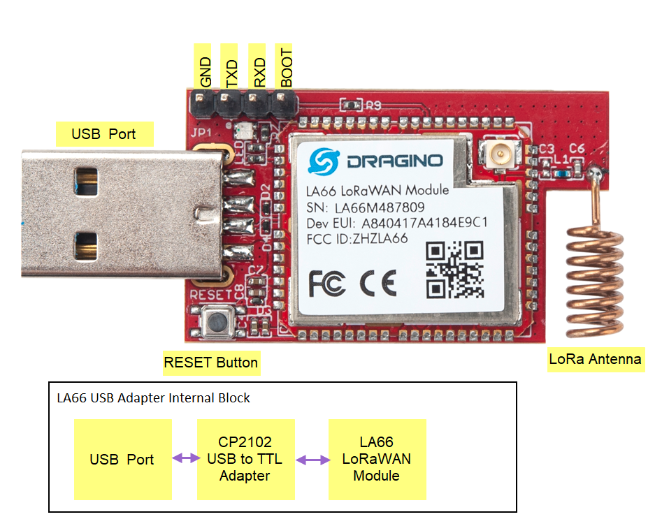
3.5 Example: Send & Get Messages via LoRaWAN in PC
Assume user already input the LA66 USB LoRaWAN Adapter OTAA Keys in TTN and there is already TTN network coverage.
1. Connect the LA66 USB LoRaWAN adapter to PC
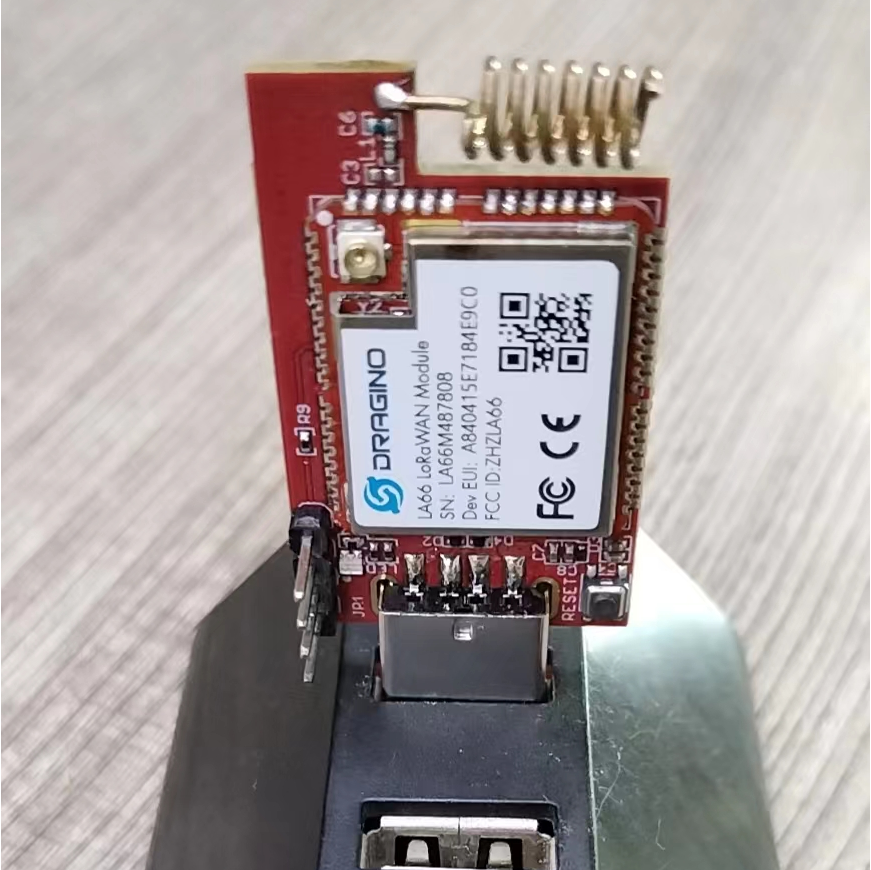
Open the serial port tool
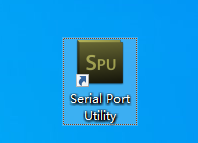
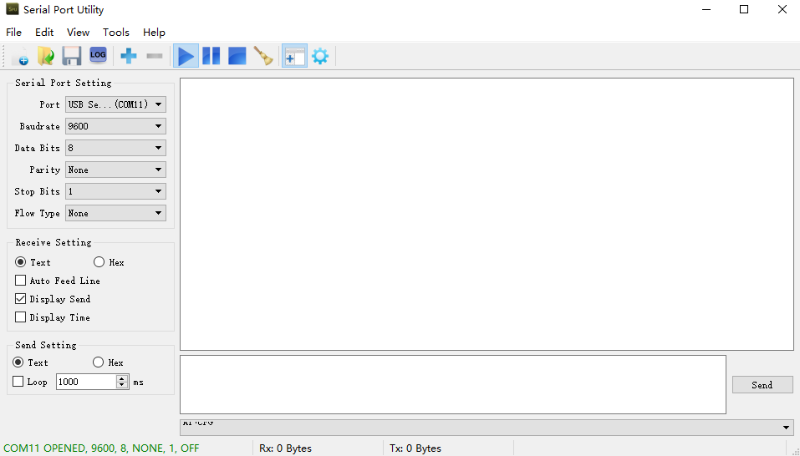
2. Press the reset switch RST on the LA66 USB LoRaWAN Adapter to reset it.
The following picture appears to prove that the LA66 USB LoRaWAN Adapter successfully Join the LoRaWAN network
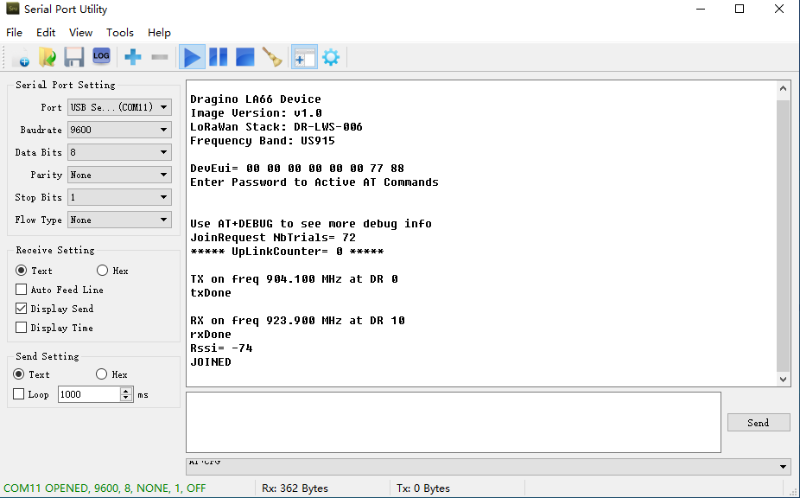
3. See Uplink Command
Command format: AT+SENDB=<confirn_status>,<Fport>,<data_len>,<data>
example: AT+SENDB=01,02,8,05820802581ea0a5
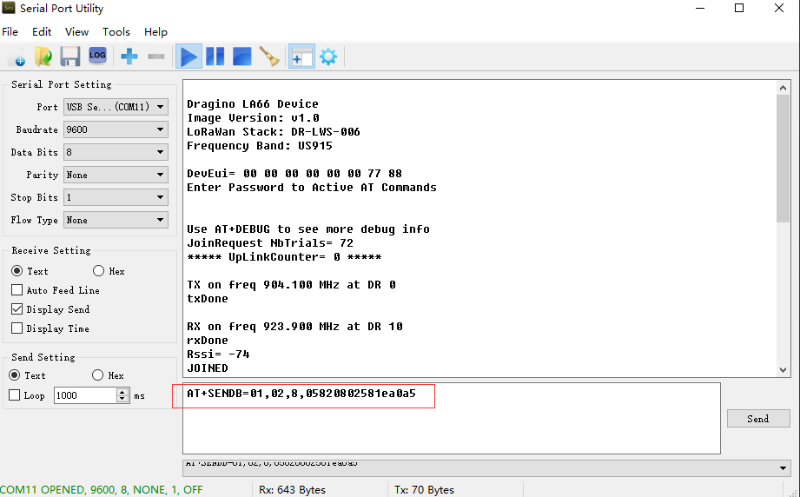
4. Check to see if TTN received the message
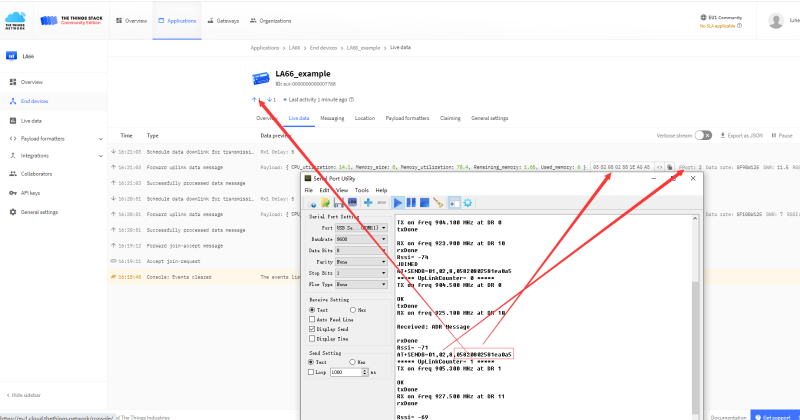
3.6 Example: Send PC's CPU/RAM usage to TTN via python
Use python as an example:https://github.com/dragino/LA66/blob/main/Send_information_to_TTN_WindosPC.py
(Raspberry Pi example: https://github.com/dragino/LA66/blob/main/Send_information_to_TTN_Raspberry%20Pi.py)
Preconditions:
1. LA66 USB LoRaWAN Adapter works fine
2. LA66 USB LoRaWAN Adapter is registered with TTN
Steps for usage:
1. Press the reset switch RESET on the LA66 USB LoRaWAN Adapter
2. Run the python script in PC and see the TTN
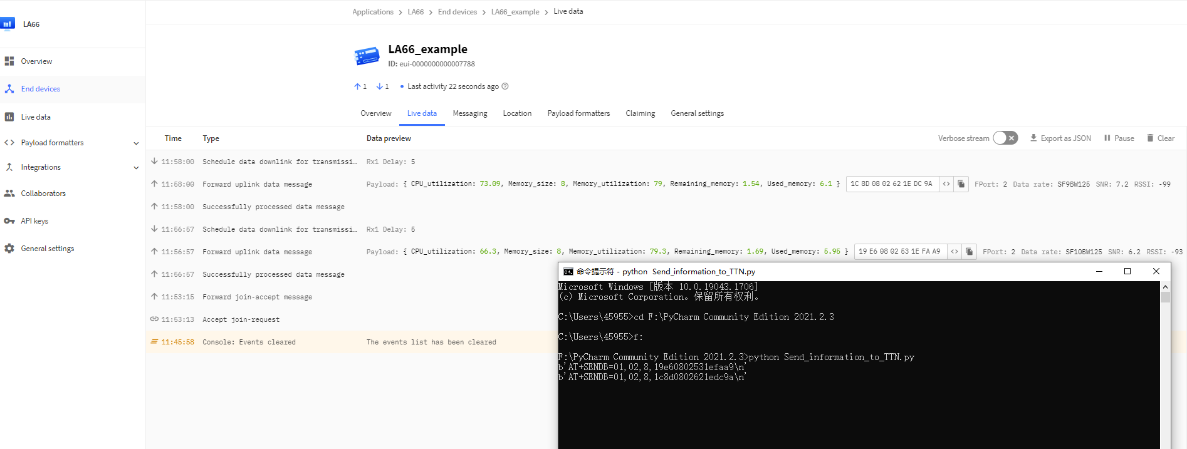
3.7 Example: Send & Get Messages via LoRaWAN in RPi
Assume user already input the LA66 USB LoRaWAN Adapter OTAA Keys in TTN and there is already TTN network coverage.
1. Connect the LA66 USB LoRaWAN Adapter to the Raspberry Pi
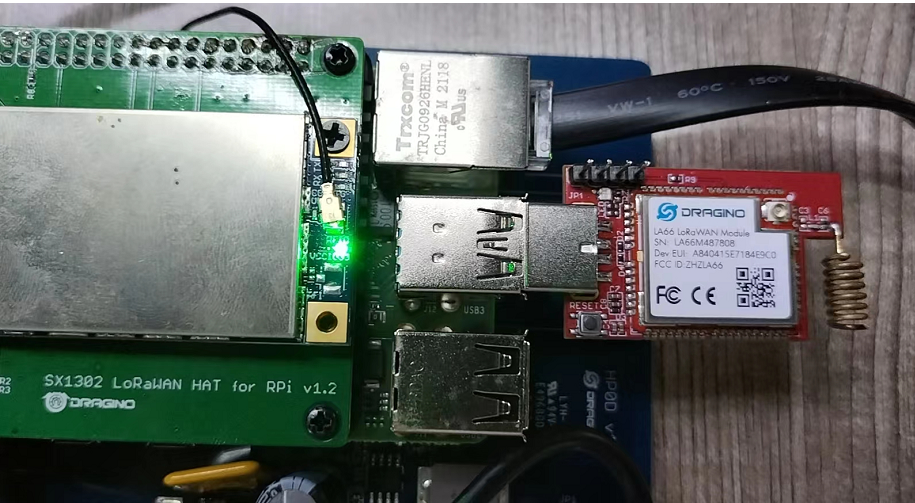
2. Install Minicom in RPi.
Enter the following command in the RPi terminal
apt update
apt install minicom
Use minicom to connect to the RPI's terminal
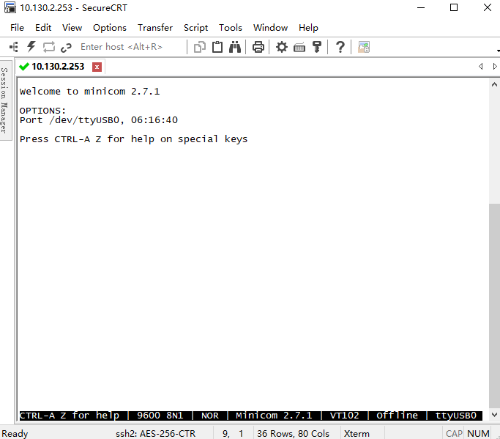
3. Press the reset switch RST on the LA66 USB LoRaWAN Adapter.
The following picture appears to prove that the LA66 USB LoRaWAN Adapter successfully entered the network.
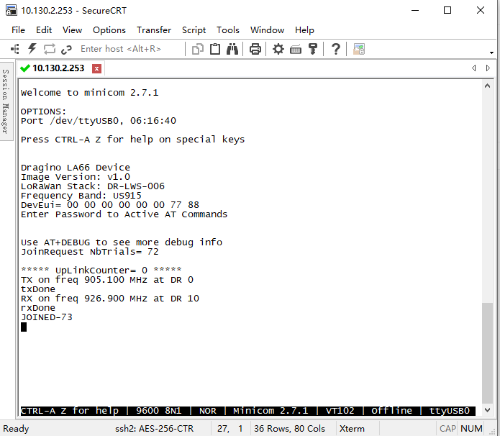
4. Send Uplink message
Format: AT+SENDB=<confirn_status>,<Fport>,<data_len>,<data>
example: AT+SENDB=01,02,8,05820802581ea0a5
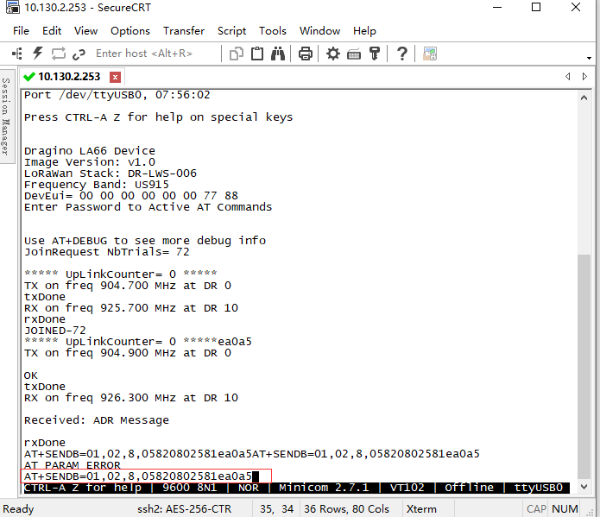
Check to see if TTN received the message
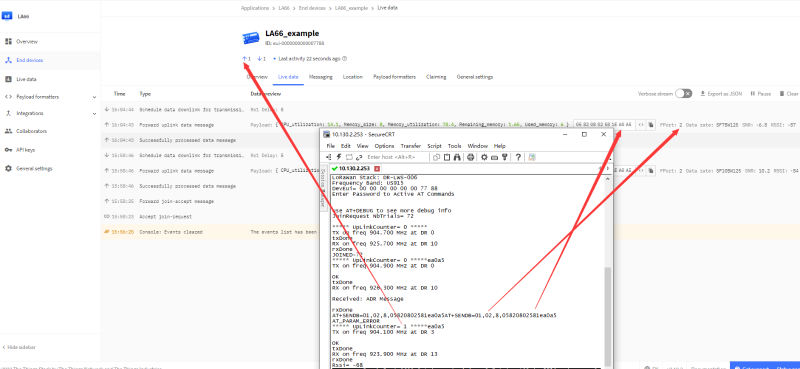
3.8 Example: Use of LA66 USB LoRaWAN Adapter and mobile APP
3.8.1 Hardware and Software Connection
Overview:
DRAGINO-LA66-APP is an Open Source mobile APP for LA66 USB LoRaWAN Adapter. DRAGINO-LA66-APP has below features:
- Send real-time location information of mobile phone to LoRaWAN network.
- Check LoRaWAN network signal strengh.
- Manually send messages to LoRaWAN network.
Hardware Connection:
A USB to Type-C adapter is needed to connect to a Mobile phone.
Note: The package of LA66 USB adapter already includes this USB Type-C adapter.
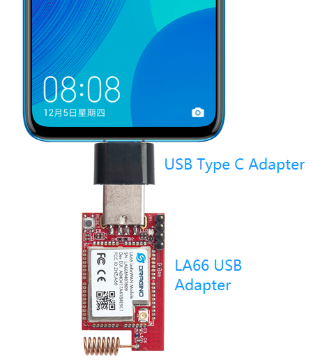
Download and Install App:
Download Link for Android apk . (Android Version Only)
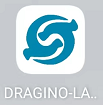
Use of APP:
Function and page introduction
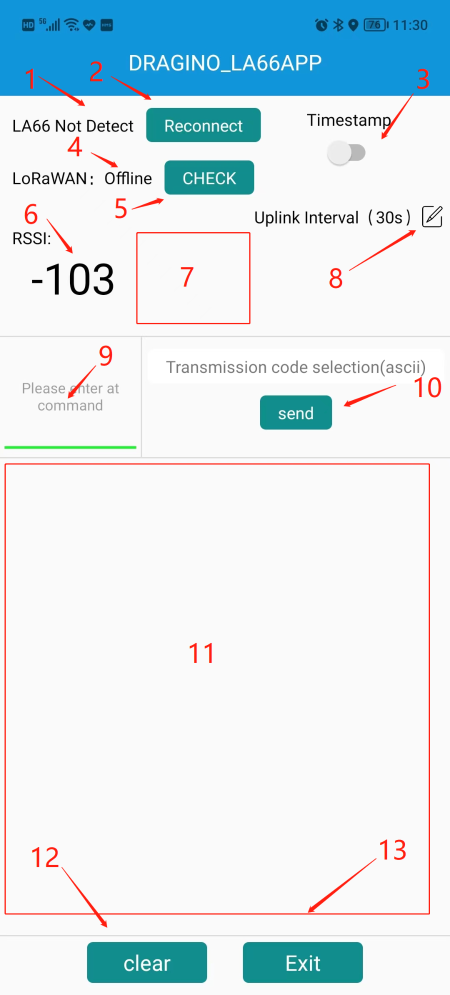
Block Explain:
1. Display LA66 USB LoRaWAN Module connection status
2. Check and reconnect
3. Turn send timestamps on or off
4. Display LoRaWan connection status
5. Check LoRaWan connection status
6. The RSSI value of the node when the ACK is received
7. Node's Signal Strength Icon
8. Configure Location Uplink Interval
9. AT command input box
10. Send Button: Send input box info to LA66 USB Adapter
11. Output Log from LA66 USB adapter
12. clear log button
13. exit button
LA66 USB LoRaWAN Module not connected
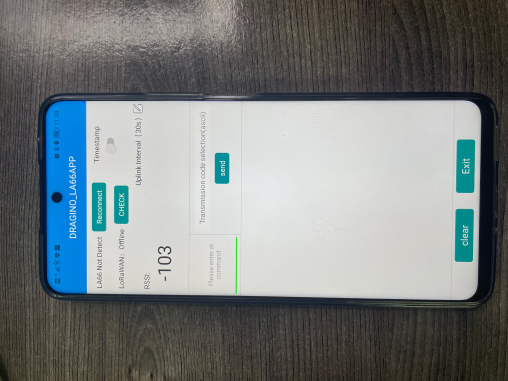
Connect LA66 USB LoRaWAN Module
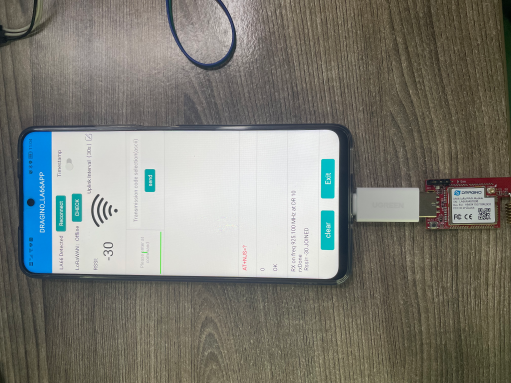
3.8.2 Send data to TTNv3 and plot location info in Node-Red
1. Register LA66 USB LoRaWAN Module to TTNV3
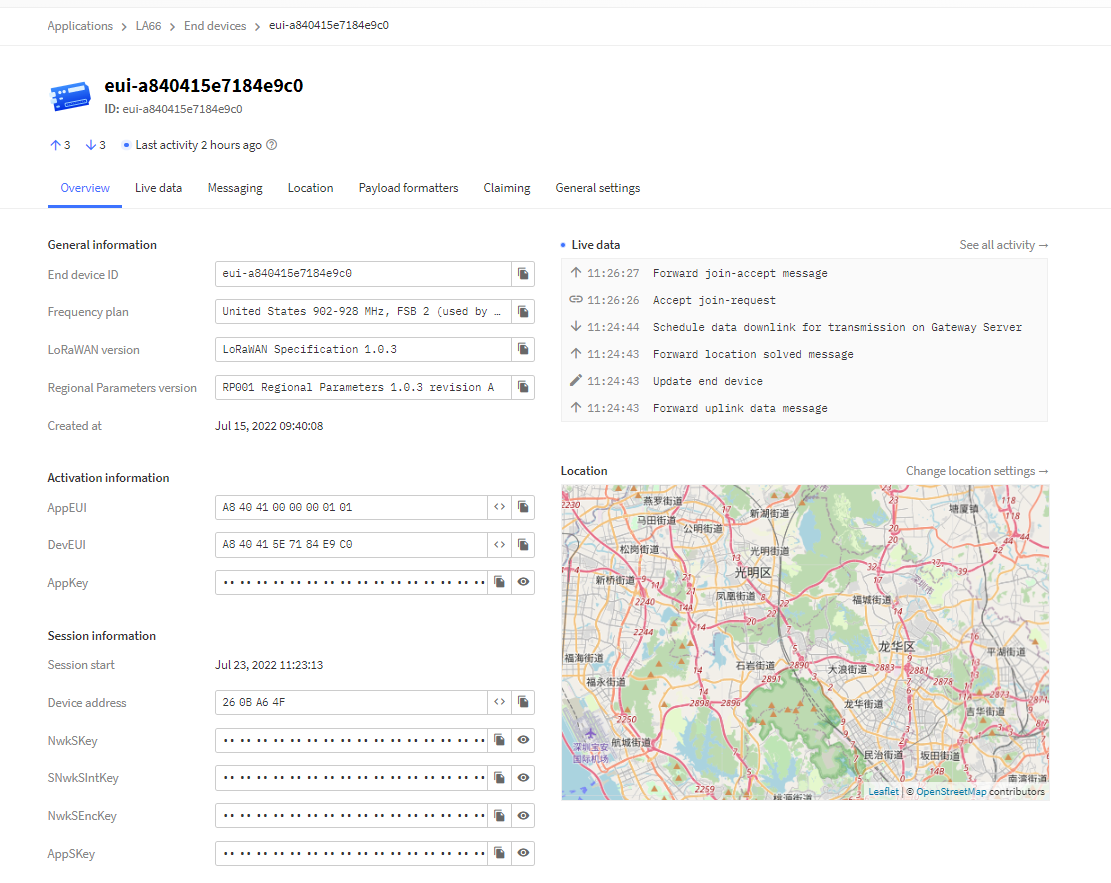
2. Open Node-RED,And import the JSON file to generate the flow
Sample JSON file please go to this link to download.
For the usage of Node-RED, please refer to: http://wiki.dragino.com/xwiki/bin/view/Main/Node-RED/
After see LoRaWAN Online, walk around and the APP will keep sending location info to LoRaWAN server and then to the Node Red.
Example output in NodeRed is as below:
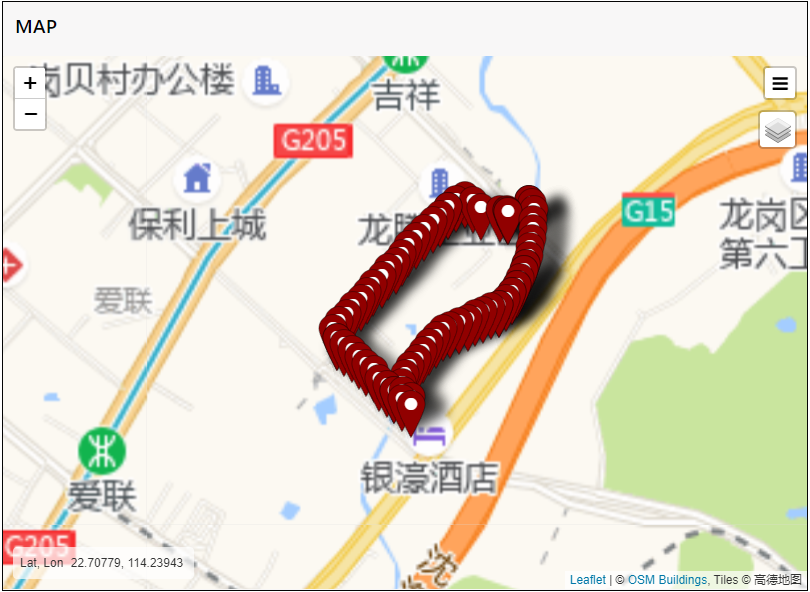
3.9 Upgrade Firmware of LA66 USB LoRaWAN Adapter
The LA66 USB LoRaWAN Adapter is the same as the LA66 LoRaWAN Shield update method
Just use the yellow jumper cap to short the BOOT corner and the RX corner, and then press the RESET button (without the jumper cap, you can directly short the BOOT corner and the RX corner with a wire to achieve the same effect)
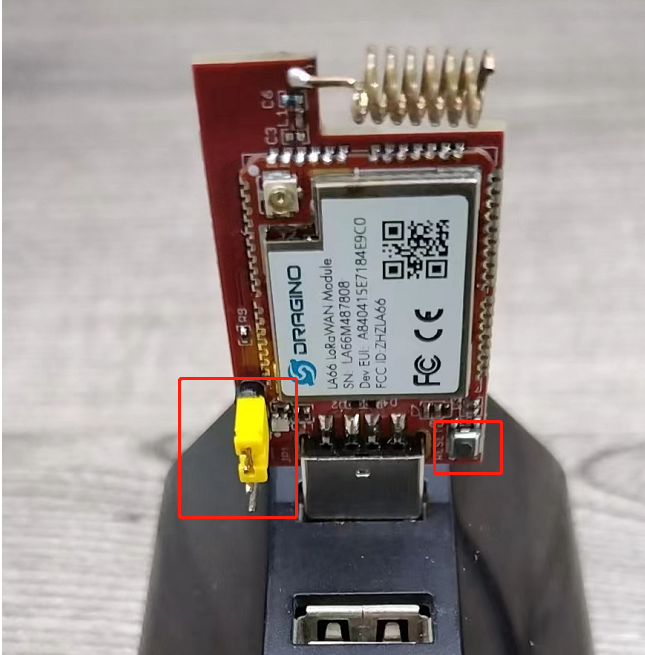
4. FAQ
4.1 How to Compile Source Code for LA66?
Compile and Upload Code to ASR6601 Platform :Instruction
5. Order Info
Part Number: LA66-XXX, LA66-LoRaWAN-Shield-XXX or LA66-USB-LoRaWAN-Adapter-XXX
XXX: The default frequency band
- AS923: LoRaWAN AS923 band
- AU915: LoRaWAN AU915 band
- EU433: LoRaWAN EU433 band
- EU868: LoRaWAN EU868 band
- KR920: LoRaWAN KR920 band
- US915: LoRaWAN US915 band
- IN865: LoRaWAN IN865 band
- CN470: LoRaWAN CN470 band
- PP: Peer to Peer LoRa Protocol
6. Reference
- Hardware Design File for LA66 LoRaWAN Shield, LA66 USB LoRaWAN Adapter : Download
